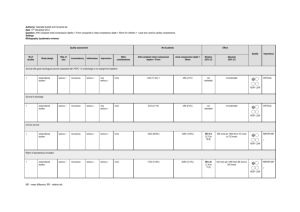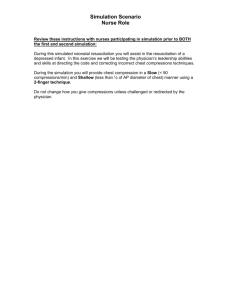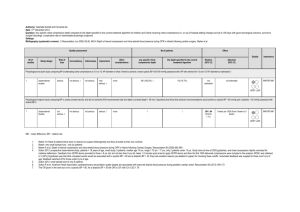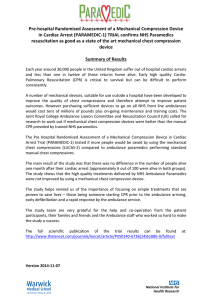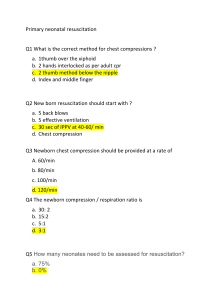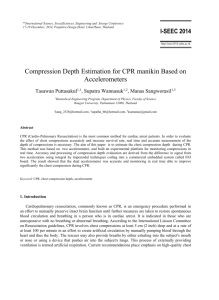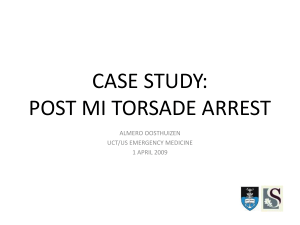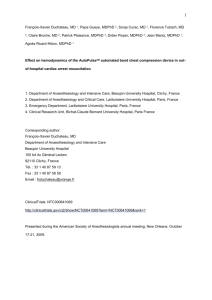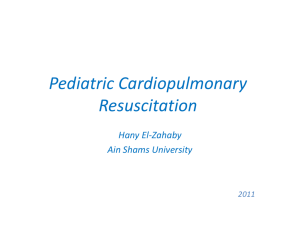Chest compression rates during cardiopulmonary resuscitation are
advertisement
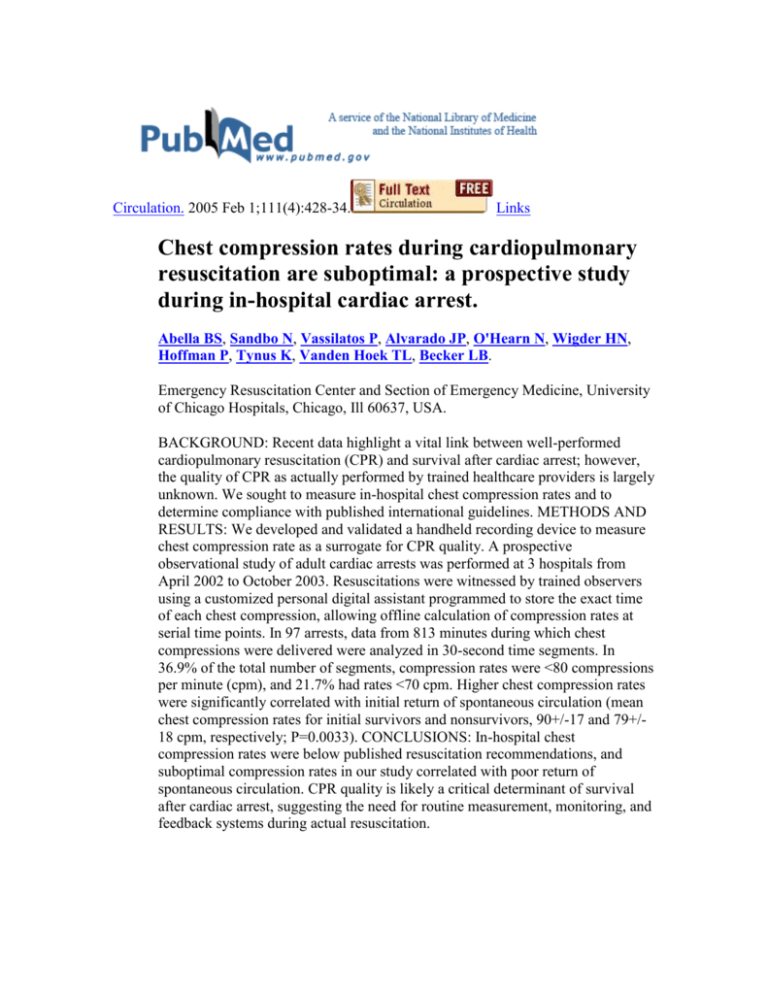
Circulation. 2005 Feb 1;111(4):428-34. Links Chest compression rates during cardiopulmonary resuscitation are suboptimal: a prospective study during in-hospital cardiac arrest. Abella BS, Sandbo N, Vassilatos P, Alvarado JP, O'Hearn N, Wigder HN, Hoffman P, Tynus K, Vanden Hoek TL, Becker LB. Emergency Resuscitation Center and Section of Emergency Medicine, University of Chicago Hospitals, Chicago, Ill 60637, USA. BACKGROUND: Recent data highlight a vital link between well-performed cardiopulmonary resuscitation (CPR) and survival after cardiac arrest; however, the quality of CPR as actually performed by trained healthcare providers is largely unknown. We sought to measure in-hospital chest compression rates and to determine compliance with published international guidelines. METHODS AND RESULTS: We developed and validated a handheld recording device to measure chest compression rate as a surrogate for CPR quality. A prospective observational study of adult cardiac arrests was performed at 3 hospitals from April 2002 to October 2003. Resuscitations were witnessed by trained observers using a customized personal digital assistant programmed to store the exact time of each chest compression, allowing offline calculation of compression rates at serial time points. In 97 arrests, data from 813 minutes during which chest compressions were delivered were analyzed in 30-second time segments. In 36.9% of the total number of segments, compression rates were <80 compressions per minute (cpm), and 21.7% had rates <70 cpm. Higher chest compression rates were significantly correlated with initial return of spontaneous circulation (mean chest compression rates for initial survivors and nonsurvivors, 90+/-17 and 79+/18 cpm, respectively; P=0.0033). CONCLUSIONS: In-hospital chest compression rates were below published resuscitation recommendations, and suboptimal compression rates in our study correlated with poor return of spontaneous circulation. CPR quality is likely a critical determinant of survival after cardiac arrest, suggesting the need for routine measurement, monitoring, and feedback systems during actual resuscitation.

